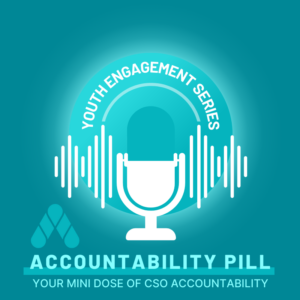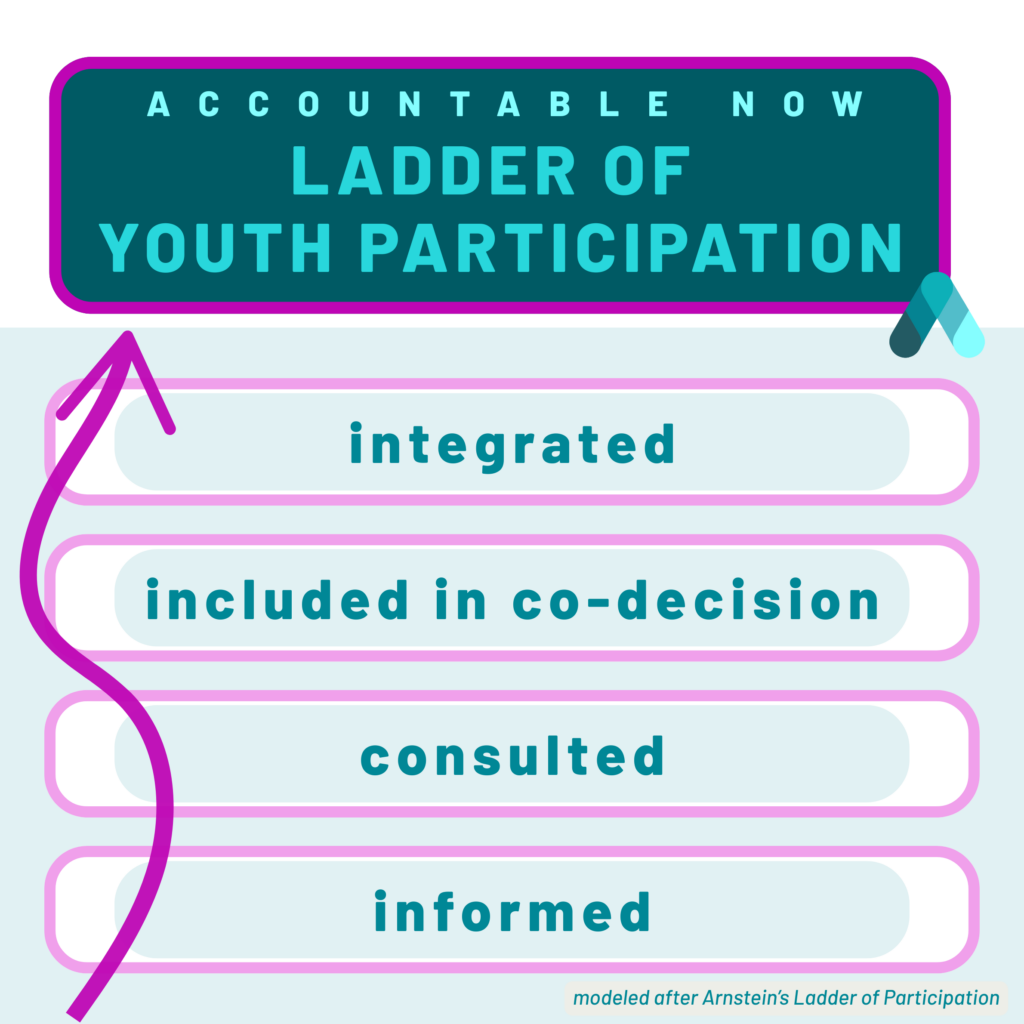
This blog post outlines findings from a recent Helpdesk request, all about integrating children and youth into governance mechanisms, providing an inside view into the support we offer our members.
Read more about Helpdesk Requests at the bottom of this piece.
Children and young people are not just the leaders of tomorrow – they are active changemakers today. Their perspectives, creativity, and lived experiences are invaluable in shaping policies and programs that directly impact their lives. But meaningful participation isn’t just about inviting young people to the table; it’s about ensuring their voices are heard, valued, and integrated into decision-making processes in a way that reflects the principles of dynamic accountability. This includes redressing unequal power dynamics and fostering a culture of two-way feedback, trust, and equity. Through dynamic accountability, organizations can move beyond hierarchical structures to a more horizontal, mutual approach that empowers young people as active drivers of change.
In a recent Helpdesk Support, we scanned the sector for policies and practices that revolve around integrating children and youth into governance. In line with how approaches can work together, we’ve organized them in a way where each step builds off the last, inspired by Sherry Arnstein’s Ladder of Participation, we’ve organized the approaches into four levels. These levels represent increasing degrees of participation and influence: Informed, Consulted, Co-Decision Making, and Integrated.

Now let’s explore each rung, along with key components for success and real-world examples.
The foundation of meaningful participation is ensuring that children and youth are informed about structures that affect them. This means organizations take active steps to educate young people about their rights, the governance mechanisms in place, and how decisions are made. When young people understand their rights and governance processes, they can hold organizations accountable and participate more meaningfully in decisions that affect their lives.
Key Components for Success:
An Example in Action from an AN Member
Plan International uses child-friendly formats to educate children about their rights and governance processes. By making information accessible, they empower young people to recognize and articulate their concerns, fostering a culture of transparency and accountability.
The next rung is to actively consult children and youth, seeking their input on governance matters that impact them. This builds on informing, going beyond to listen to their perspectives and incorporating their feedback into decision-making. It’s crucial that organizations don’t treat consultation as just a box to tick – it’s about building trust by giving young people a genuine voice in decision-making, showing that their perspectives are valued and acted upon.
Key Components for Success:
An Example in Action from an AN Member
The Taiwan Fund for Children and Families (TFCF) conducts biennial surveys with the children they work with. Feedback from these surveys shapes the organization’s strategic direction and advocacy efforts. TFCF also runs a Youth Voice Initiative, empowering young people to lead advocacy and learning activities.
At this level, young people are involved in a co-decision making process. They become valued decision-making partners, playing sustained roles in governance mechanisms. This could involve creating youth advisory boards, appointing youth representatives to governance bodies, or establishing children’s leadership panels. By including young people in co-decision efforts, organizations work with young people, strengthening their capacity and directly listening and acting on their input.
Key Components for Success:
An Example in Action from an AN Member
The World Organization of the Scout Movement (WOSM) previously had a Youth Advisory Body that provided input to its World Scout Committee. In 2024, they took a bold step forward by fully integrating young people into their governance structures, ensuring their voices are central to decision-making.
The top rung of participation is integration, where young people are not just participants, but leaders within the organization. They hold governance roles, drive strategic decisions, and shape the organization’s future. Integrating young people into leadership ensures that organizations remain innovative, representative, and future-focused.
Key Components for Success:
An Example in Action from an AN Member
Restless Development ensures that at least two members of its board are under 30, including the Global Chair. Across the organization, 80% of staff and volunteers are under 35; young people hold key leadership positions, driving accountability and implementation.
This level of integration transforms organizations into dynamic, inclusive entities where young people are not just included—they are driving change.
Key Considerations
!
Safeguarding and Consent
While these rungs provide a helpful roadmap, it’s important to remember that there’s no one-size-fits-all approach. Organizations must consider factors like safeguarding, capacity-building, and informed consent. For minors, consent should involve both the child and their parent(s) or guardian(s), and it should be revocable at any time.
Limitations to the Model
While the metaphor of the ladder can make it easy to think that the higher rungs are more desirable, it’s important to remember that each context has its own unique needs and appropriate responses. This is especially true considering the age range of “children and young people” comes with quite a wide variety of comprehension and capacity. For instance, informing children about their rights is incredibly valuable, even though it is lower on the ladder. Similarly, the high rungs are not always best in each context. For example, excluding young adults from participating in places they do not have specialized skills, like managing funds, may be appropriate. However, even in these cases, organisations are able to help young people build and strengthen skills so that they can one day join those conversations.
Understanding the limitations of this model (including more laid out by Organizing Engagement), organizations should do their best to work towards more equitable distribution of power, incorporating young people in capacity strengthening to help them engage more deeply and meaningfully.
It’s essential to ensure that young people are heard while protecting their well-being and maintaining ethical governance practices.
For more Accountable Now resources on youth involvement and participation, check out our Spotlight: Youth webpage.
For a copy of the full Helpdesk Support response, reach out to us: comms@accountablenow.org.
What is it?
The non-profit sector is filled with practical toolkits, reflective features, and comprehensive reports on just about any topic. But finding tools applicable to your organization can be daunting. Sometimes you find a tool that is on topic, but not quite applicable for your type of organization. Other times, it can feel like there are no resources on the topic you’re searching!
When organizations are able to make decisions with an informed background, they are able to implement good practices that work well for their scope, size, and align with their mission and values.
At Accountable Now, our Helpdesk feature supports members with just this!
How does it work?
To submit a Helpdesk request, a member first submits a topic or question of interest revolving around a theme they’re exploring internally. Our team then scans the sector for applicable and relevant resources, tailoring assistance to each organization’s structure, context and needs. We are also able to pull on a large pool of policies and practices from our membership and network. We compile our findings into a document that covers our research-based insights, practical tools, and examples of good practices.
Are you a member looking to submit a Helpdesk request? Get in touch with our Membership Team.
This blog comes from the Accountable Now Team: written by Anne Camplesi and Katie McCarthy, with the original Helpdesk Request compiled by Bao Han Tran Le.